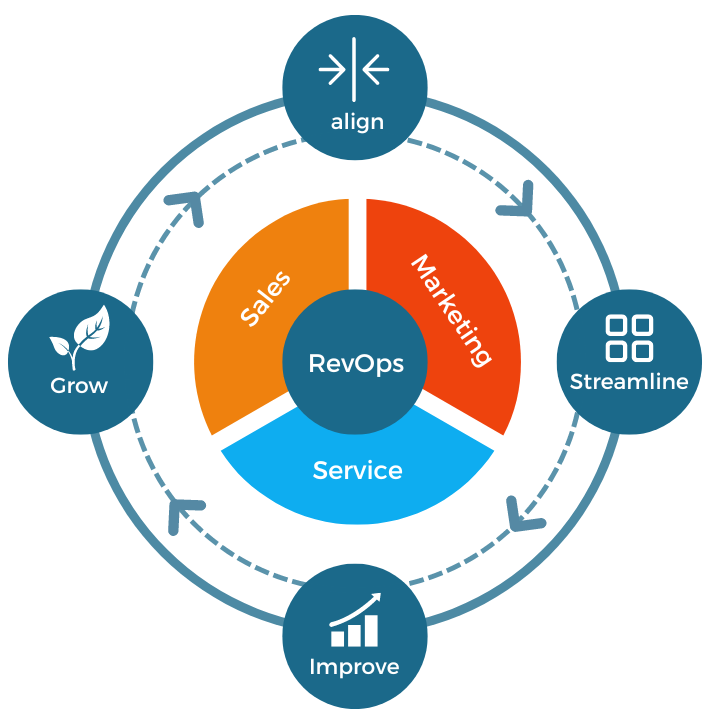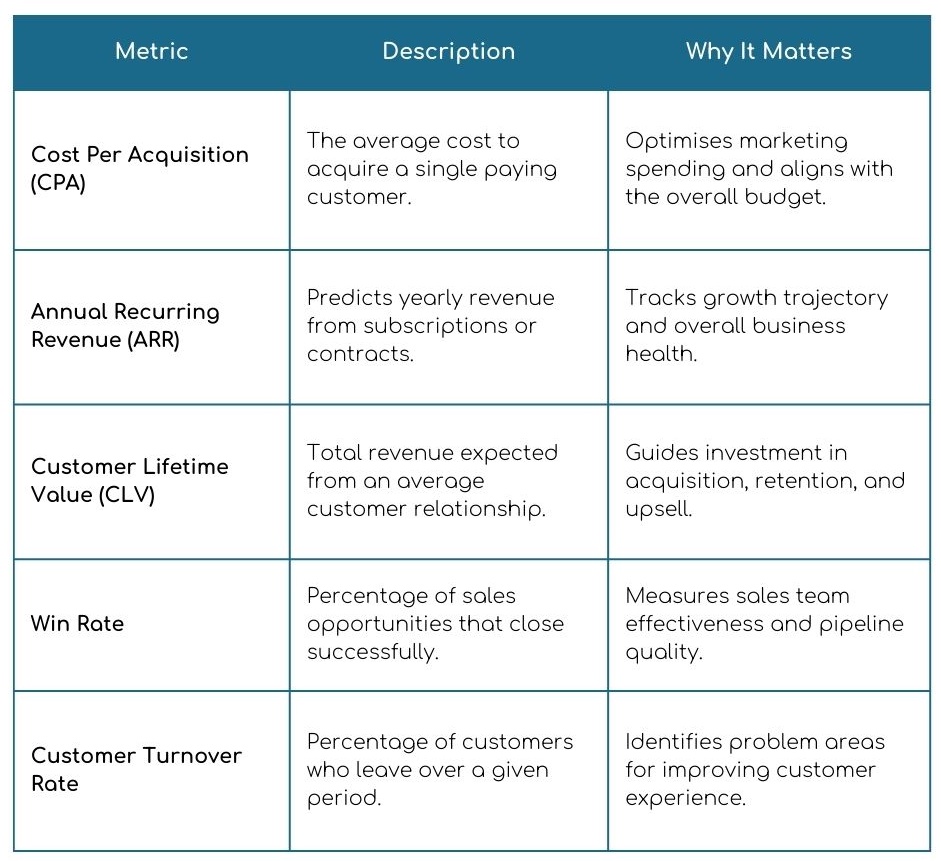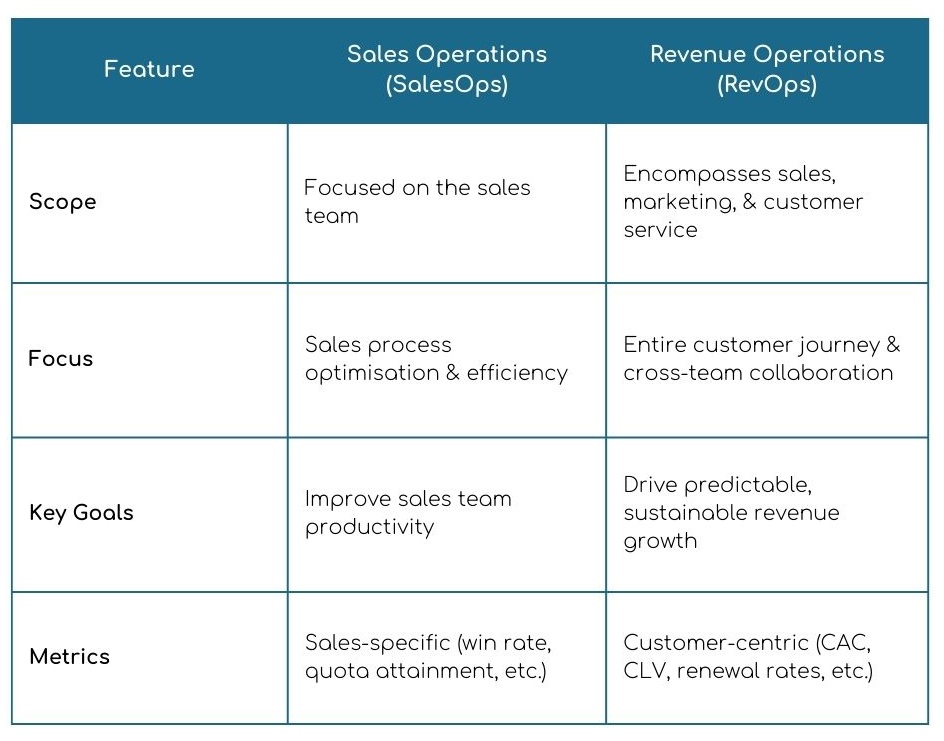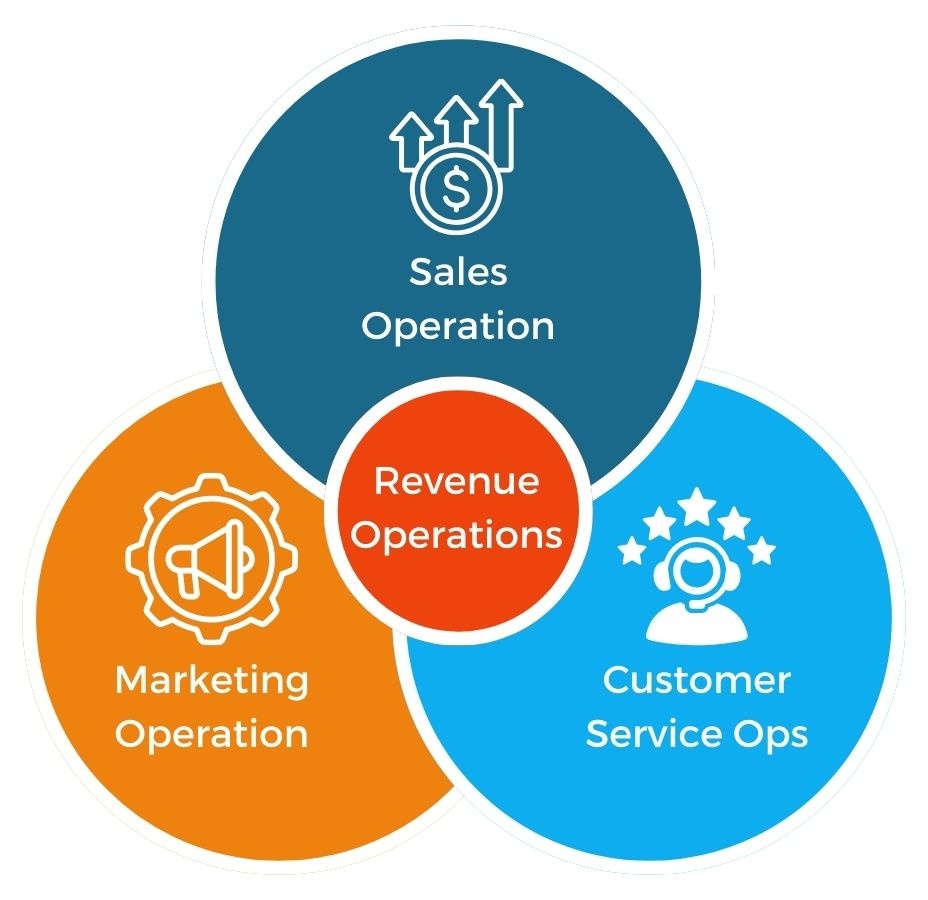The RevOps Revolution is here – are you ready?
Tired of feeling like your business is running at half-speed? Frustrated by missed opportunities, disconnected teams, and inconsistent results? Revenue Operations (RevOps for short) is the key to accelerating growth and maximising your company’s full potential.
Imagine this:
- Your sales closing deals faster because they’re only focused on the hottest leads.
- Your marketing team effortlessly generates a stream of highly qualified prospects.
- Your customers feel more valued as they become loyal advocates for your brand.
RevOps makes this vision a reality by breaking down the silos that hinder your revenue engine.
What is Revenue Operations?
At its core, RevOps is a deep-dive approach to syncing the operations, systems and data that support revenue-generating teams across the entire customer journey. Kind of like the engine of a car. Each part (sales, marketing, service) is finely tuned and well-oiled, working together to drive the business towards its revenue goals.
What problems does Revenue Operations solve?
Imagine your sales team closes a big deal, but your customer service team is blindsided. You’ve spent a fortune on marketing leads, yet unqualified prospects are clogging your sales pipeline. Revenue Operations (RevOps) is designed to fix these disconnects:
- Disorganised Processes: RevOps streamlines lead management, customer data and pipeline processes. This organisation boosts efficiency across revenue-generating functions.
- Marketing-Sales Divide: RevOps bridges the gap between marketing and sales by aligning goals, strategies and understanding of the customer journey. Improving this collaboration drives better results.
- Inefficient Revenue Cycles: RevOps analyses your entire revenue cycle to find and fix bottlenecks. These optimisations ensure your company makes the most of every opportunity.
How does RevOps work?
RevOps creates an alignment within a business by:
- Setting a shared revenue goal that all teams can work towards
- Ensuring each department’s strategy supports the shared goal
- Improving efficiency by optimising how departments work together throughout the customer journey
For example, instead of the Sales team just chasing quick sales, RevOps might help them focus on building strong, long-term customer relationships, using a customer retention policy for example. This means that the Marketing department can target the right kind of leads and customer service can more easily keep those customers satisfied.
Key Benefits of Revenue Operations
Let’s take a look at how RevOps can boost your business potential.
- Predictable Revenue Growth: RevOps analyses data to reveal what’s working and what’s not across every stage of the buyer’s journey. This allows you to refine strategies, forecast more accurately, and drive consistent growth.
- Maximise Every Opportunity: RevOps eliminates the guesswork within the lead qualification, sales hand-offs, and client onboarding. This means high-potential leads never fall through the cracks and your team can focus on closing revenue.
- Customer Delight from Start to Finish: With RevOps aligning teams, you create a seamless customer experience. From their first interaction to becoming long-term clients, they’ll feel understood and valued – driving higher retention and referrals.
- Proactive Risk Mitigation: RevOps provides data transparency to spot potential roadblocks before they become major problems. Identify weak points in your pipeline, misaligned marketing spending, or brewing customer satisfaction issues before they cause significant damage.
5 key Revenue Operations metrics for data-driven growth
RevOps transforms how you make business decisions by putting data at the forefront. Tracking these essential metrics will give you a clearer picture of your sales, marketing, and customer success efforts.
Is RevOps Right for Your Business?
RevOps is ideal for companies experiencing the following challenges:
- Stagnant or Unpredictable Growth: If you’re struggling to consistently hit sales targets or forecast revenue accurately, RevOps can identify and fix the leaks in your funnel.
- Misaligned Sales and Marketing: Are sales complaining about poor lead quality? Does marketing feel like their efforts aren’t generating results? RevOps builds a bridge for these teams to operate in sync.
- “Siloed” Customer Experience: Do customers get bounced around between departments or receive inconsistent messaging? RevOps focuses on creating a seamless experience for greater satisfaction.
- Difficulty Scaling Operations: As your business grows, are your existing processes starting to strain? RevOps helps you build a foundation that supports growth without sacrificing efficiency.
RevOps vs. SalesOps: Understanding the Key Differences
While both functions aim to enhance revenue growth, there are important distinctions between them:
When to Choose Which:
SalesOps is ideal if:
- Your sales team needs better tools, training, or process streamlining.
- You’re facing bottlenecks within the sales cycle itself.
- Your primary goal is immediate sales efficiency improvements.
RevOps is a better fit if:
- Sales and marketing feel disconnected with frequent misalignment.
- You struggle with inconsistent lead quality or poor handoffs.
- Customer experience is fragmented across their journey.
- You want to build a data-driven foundation for long-term growth.
Important Note: RevOps often evolves from an established SalesOps function. If your company is growing rapidly, starting with SalesOps can provide a strong foundation before transitioning to a broader RevOps model.
How do you implement Revenue Operations?
RevOps can transform your business, but it requires a structured plan. Here’s a roadmap to guide your implementation:
1. Assess Your Current State:
- Technology Audit: Evaluate your CRM, marketing automation, analytics tools, and any other customer-facing software. Are they integrated effectively? Where are the gaps?
- Process Mapping: Map out your sales, marketing, and customer service workflows in detail. Identify bottlenecks, redundancies, or areas where handoffs are unclear.
2. Build Your RevOps Foundation:
- Define Shared Goals: Work with sales, marketing, and customer service leadership to set clear, revenue-centric goals for the entire customer journey.
- Data Alignment: Choose the key metrics (see previous section) you’ll track together and determine how data will be shared across teams for visibility.
- Establish Onboarding and Training: establish a clear onboarding process that allows key stakeholders to train their teams.
3. Optimise with Technology and Collaboration:
- Automation: Identify repetitive tasks within each team’s workflow that can be automated to free up time for higher-value activities.
- Cross-Functional Meetings: Establish regular check-ins between departments. Focus on problem-solving, sharing customer insights, and refining goals. This would be the follow-up to the training.
4. Build for the Future:
- Scalable Processes: As you design workflows, consider how they’ll handle increased volume as your business grows.
- Measure and Iterate: Track RevOps success metrics regularly. Be prepared to make adjustments to your processes and technology as needed.
Example of successful RevOps implementation
An architecture firm with 100 employees faced the following challenges:
- Disconnected teams slowing down project acquisition
- Lacked insight into how their entire sales and marketing processes worked.
Their RevOps Solution:
- They formed a cross-departmental team dedicated to the entire client journey, from initial contact to project completion.
- They set clear goals and metrics for success
- They adopted tools to streamline workflow, analyse data and improve communication.
The Results:
- Faster acquisition of new projects
- Improved collaboration between teams
- Successful expansion of their service offerings
Potential issues when implementing Revenue Operations
While RevOps brings major benefits, implementing it successfully takes work. Here are some of the common challenges we’ve encountered.
- Change is Hard: But the reward is great! RevOps may require significant shifts in how your company operates. Invest in training to explain the benefits and help everyone understand their new role.
- Tools Matter: You need the right software to support your RevOps strategy. Don’t skimp on tools that will help your team succeed.
- Don’t Force Fit: RevOps may mean redefining how departments work together. For example, sales and marketing, while always connected, may need a clearer separation of duties.
What does a Revenue Operations manager do?
- Direct the RevOps team: Manage specialists, track sales funnel performance, and analyse key metrics.
- Shape strategy with data: Analyse market trends, sales plans, and marketing efforts to guide decision-making and set priorities.
- Optimise processes and incentives: Design workflows and programs that motivate teams and drive higher performance.
- Collaborate for success: Work closely with sales, marketing, customer service, and other leaders to align efforts and track overall revenue growth.
- Stay ahead of the curve: Participate in company training and industry events to continuously improve your knowledge and skills.
Are you an Ops manager wanting to upgrade to become a RevOps manager?
- An ops manager needs to align their goals to be based on revenue and understand the overall customer journey.
So you’ve implemented Revenue Operations what comes next?
Revenue Operations are key to driving consistent and scalable growth for your business. Businesses can unlock their full potential and keep ahead of the competition by unifying operations, aligning teams, and optimising the customer journey. Implement RevOps today and future-proof your business today!
Let’s talk about building a RevOps strategy tailored to your needs. Book a free consultation today, and discover how we can transform disconnected teams and inconsistent results into a predictable, high-performance revenue machine.










